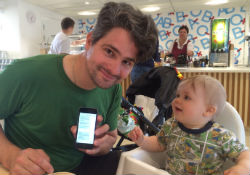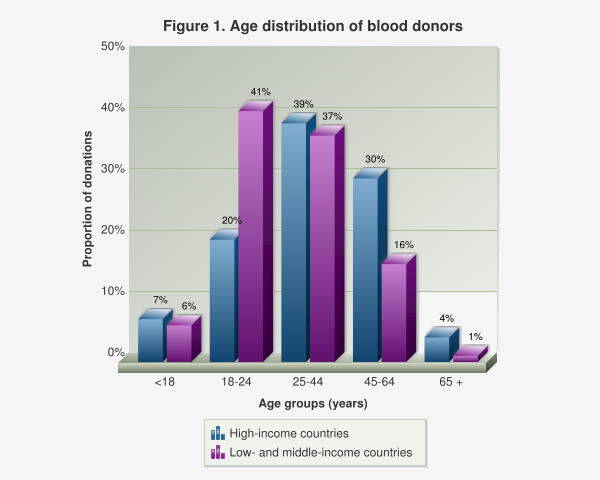Blood connects us all – blood donation text message service in Sweden

Blodcentralen Stockholm
Arvid Öhlin was relaxing at home in Stockholm when he heard the familiar bleep of a text message, or SMS, arriving on his mobile phone. It was an ordinary event, but this was no ordinary text. It was a thank you, notifying him that the blood he recently donated had been given to a patient.
The text message initiative, launched last year by the Stockholm blood donation service Blodcentralen, uses technology to recruit and retain new donors. Donors receive an automated text telling them when their blood has made it into a fellow human being's veins.
Arvid, aged 40, is now a veteran blood donor. He has given blood 26 times since he was 19 years old. He is so comfortable giving blood that he now takes his little son, Assar, along to the blood bank.
"I was at home the first time I got the thank-you SMS. It felt good and made me happy. It is really nice to get a confirmation that your blood is used," he explains. When asked what he would say to others about giving blood, he says simply, "I think it is a natural thing to do – if you are able to, you should."
High-income countries need to recruit more young people to give blood. The Stockholm service hopes their text messaging initiative will help them remedy shortages. According to Communications Manager Karolina Blom Wiberg, "We are convinced the SMS builds loyalty and the donors (including me) love getting them. They hit you right in the gut when you think that someone has in this instant been helped by my blood."
Blood donation – key facts
- Of the 112.5 million blood donations collected globally, approximately half are collected in the high-income countries, home to 19% of the world's population.
- The blood donation rate in high-income countries is 33.1 donations per 1000 people, 11.7 donations in middle-income countries and 4.6 donations in low-income countries.
- 70 countries report collecting fewer than 10 donations per 1000 people. Of these, 38 countries are in the WHO African Region, 6 in the Region of the Americas, 6 in the Eastern Mediterranean Region, 5 in the European Region, 6 in the South-East Asia Region, and 9 in the Western Pacific Region. All are low- or middle-income countries.
- The age profile of blood donors shows that proportionally more young people donate blood in low- and middle-income countries than in high-income countries (see Figure 1). Blood donor demographics are important for formulating and monitoring recruitment strategies.
Growing use of mHealth across European Region
According to the latest report on eHealth in the European Region, text messaging is widely used in mHealth (mobile health, including apps, wearable technologies and medical devices). Texts are used for sending appointment reminders and in health promotion, awareness raising and community mobilization campaigns. Yet, only 3 countries surveyed had government-sponsored mHealth programmes and few had conducted in-depth evaluations.
Claudia Stein, Director of the Division of Information, Evidence, Research and Innovation at WHO/Europe, explains that "recruiting and retaining young blood donors who will continue to donate for decades is essential to ensure a self-sufficient blood supply. This is a tremendously powerful use of text messaging as an eHealth tool to mobilize a community for the greater good, and could be adapted easily to other contexts and countries."
World Blood Donor Day 2016
World Blood Donor Day is celebrated on 14 June. This year's campaign, "Blood connects us all", is an opportunity to thank blood donors for their life-saving gift of blood. It also aims to create wider public awareness of the need for regular blood donation, and to inspire those who have not yet donated blood to start. Regular, voluntary, unpaid blood donations are the foundation of a safe, sustainable blood supply.

WHO



